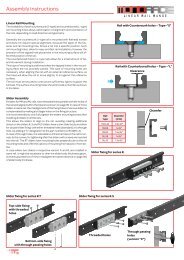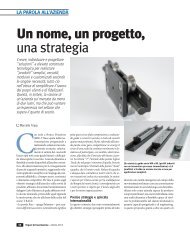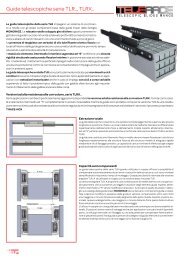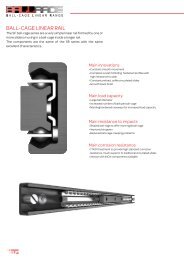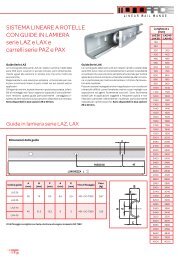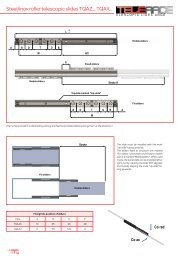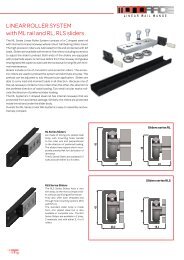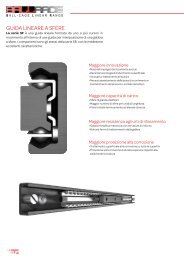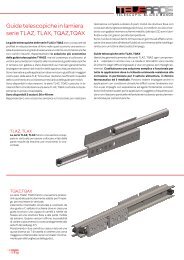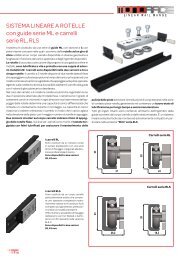general catalogue - T RACE SpA
general catalogue - T RACE SpA
general catalogue - T RACE SpA
You also want an ePaper? Increase the reach of your titles
YUMPU automatically turns print PDFs into web optimized ePapers that Google loves.
Calculation of flexion<br />
T elescopic s lides R ANGE<br />
K<br />
P<br />
= =<br />
Co rad<br />
The extended slides have a minor flexion “ f ” in function<br />
of applied load P and its own construction. What gives the<br />
strength of the slides, are merely the intermediate element’s<br />
shape. The slides with a long S-shape intermediate<br />
element TLS, TLR, TLA allow for much lower flexion, than<br />
the compact slides TSQ, TLQ, TQA, even though all base<br />
components are identical.<br />
L (mm)<br />
The flexion can be estimated as approximately:<br />
f =<br />
(K • P)<br />
1000<br />
K<br />
Where:<br />
K = coefficient obtained from graph, in function of slide type<br />
and length.<br />
P = applied load in the central point of the single slides<br />
ATTENTION: The flexion “ f “ is a conceptual flexion. The<br />
actual flexion is strongly influenced by the structural rigidity<br />
and assembly precision.<br />
Co rad<br />
In case the load P was applied on two slides in an eccentric<br />
position, it is necessary to determine the equivalent component<br />
Pe for each slides (see page 74) and replace it to P<br />
in the formula.<br />
L (mm)<br />
Extension & closing forces<br />
The required force Fe to extend the applied load, is determined<br />
by the friction of the slide’s rolling components and<br />
applied load Pe is:<br />
Fe ≈ 0,01 • P (N)<br />
P<br />
Fc<br />
The required force Fc to close the applied load is<br />
Fc = 0,01 • P +<br />
f<br />
• P (N)<br />
H<br />
Fe<br />
Where :<br />
P = radial load applied on single rail<br />
f = calculated flexion<br />
H = stroke of slide<br />
For applications with 2 slides, with even load the force is x 2 .<br />
In addition there might be some additional “binding friction”<br />
from non precise assembly. For applications requiring lowest<br />
extension/closing forces is recommended roller slides<br />
series TLR and TLQ .<br />
76



